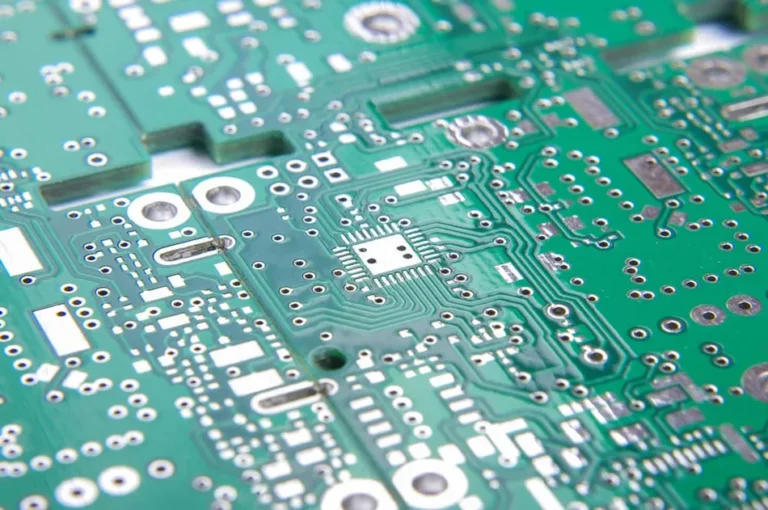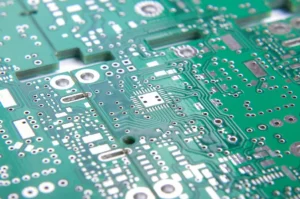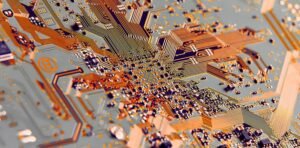Double-layer PCBs are the backbone of modern electronic design, offering enhanced connectivity, space efficiency, and versatility over single-layer boards. Whether you’re designing consumer electronics, industrial machinery, or automotive systems, understanding how double-layer PCBs work and how they are manufactured is key to optimizing performance and cost.
This article explains what double-layer PCBs are, their advantages, common applications, and step-by-step manufacturing processes.
Understanding the Concept of Double-layer PCB
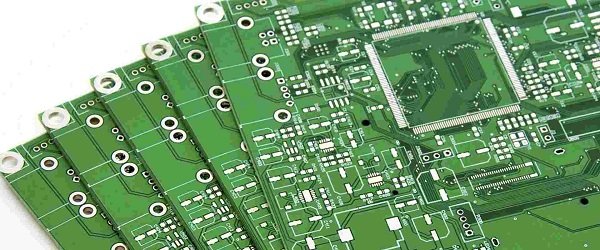
A double-layer PCB (also called a double-sided PCB) is a type of circuit board that has copper traces on both the top and bottom sides. Unlike single-layer boards that have only one conductive side, double-layer boards allow for more complex circuit designs and increased component density.
The two copper layers are connected by vias, which are small plated holes drilled through the board that allow electrical signals to travel between the top and bottom layers.
Advantages of Double-layer PCB
Compared to single-sided PCBs, double-layer boards offer several notable benefits:
- Increased circuit complexity: More routing options allow engineers to fit more functionality in a compact space.
- Improved performance: Power and signal paths can be separated, reducing interference and enhancing reliability.
- Higher component density: Ideal for compact and advanced electronics.
- Cost-effective: While more expensive than single-sided boards, they are cheaper and simpler than multi-layer PCBs.
These features make double-layer PCBs a popular choice for a wide range of mid-level complexity applications.
Common Applications of Double-layer PCBs
Due to their balance of complexity and affordability, double-layer PCBs are used in:
- Consumer electronics (smartphones, televisions, game consoles)
- LED lighting systems
- Industrial control systems
- Automotive electronics
- Power supplies and converters
- Home automation devices
Materials Used in Double-layer PCB Manufacturing
The primary materials for manufacturing include:
- Substrate: Typically FR-4 (fiberglass epoxy resin) for rigidity and insulation.
- Copper foil: Laminated on both sides of the substrate.
- Solder mask: A protective layer that prevents oxidation and solder bridges.
- Silkscreen: For component labels and markings.
- Vias: Plated through-holes that connect top and bottom layers.
Material quality greatly affects the durability and electrical performance of the finished PCB.
How is a Double-layer PCB Made – Step-by-Step Process
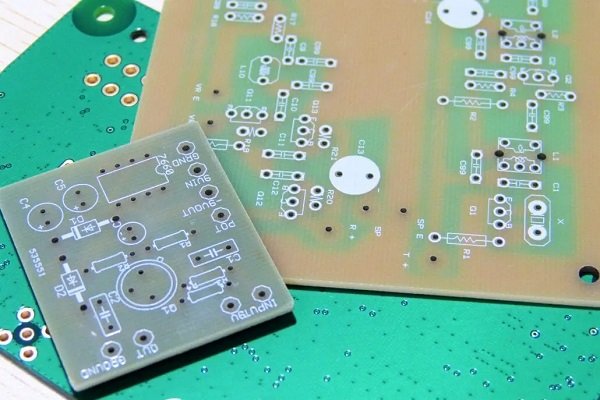
Manufacturing a double-layer PCB involves multiple precise steps:
- Design and layout: Engineers use CAD software to design the circuit and define trace paths for both layers.
- Printing the design: The PCB layout is printed onto photoresist film.
- Copper lamination: Copper foil is applied to both sides of the base substrate.
- Etching: Unwanted copper is removed using a chemical process, leaving only the desired circuit paths.
- Drilling vias: Holes are drilled where electrical connections between layers are needed.
- Plating through-holes: Vias are plated with copper to enable conductivity.
- Solder mask and silkscreen application: Protective solder mask and markings are added.
- Surface finish: Final coatings like HASL, ENIG, or OSP are applied for better solderability.
- Testing and quality control: Electrical testing ensures functionality and checks for shorts or open circuits.
Each stage must be carefully controlled to ensure performance, reliability, and durability.
Difference Between Single-layer and Double-layer PCB
| Feature | Single-layer PCB | Double-layer PCB |
| Copper Layers | 1 | 2 |
| Component Density | Low | Medium |
| Circuit Complexity | Basic | Intermediate |
| Cost | Lower | Moderate |
| Applications | Toys, calculators | Industrial, consumer electronics |
Double-layer PCBs strike a balance between cost and complexity, making them ideal for a wide range of practical applications.
Choosing a Reliable Double-layer PCB Manufacturer
To ensure the quality of your PCBs, choose a manufacturer with:
- Strict quality standards (ISO, RoHS)
- Advanced machinery for drilling, plating, and inspection
- Fast prototyping and flexible batch sizes
- Technical support and DFM (Design for Manufacturability) assistance
At Tenxinjie, we specialize in high-quality double-layer PCB manufacturing, offering fast delivery, custom specifications, and competitive pricing for global clients.

